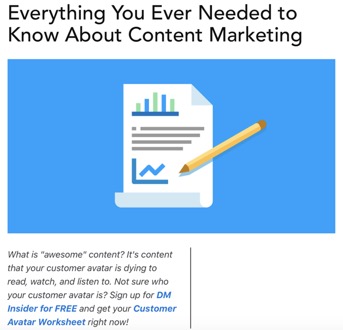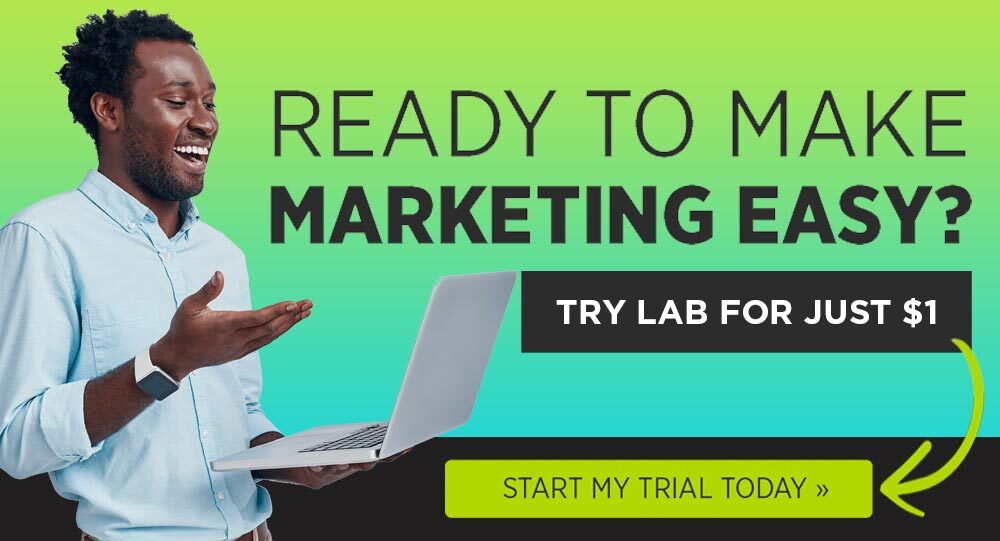

Search engine optimization (SEO) gets a bad reputation as being one of the hardest parts of marketing to succeed in.
We’re not going to say SEO is easy. It isn’t. But we also don’t want you to think that it is impossible to improve website rank. Boosting your SEO rankings isn’t out of reach, even if you do all the work yourself.
When it comes to SEO strategy, you should have a long-term strategy to land you as the first search result for a keyword or keyword phrase. The long-term strategy will be fairly complex. You’ll do an SEO audit, conduct keyword research, create internal links, do some external link building, build-out relevant content for related keywords, and dive into the world of technical SEO. Google Analytics will become your best friend and worst enemy.
Then, you should have a short-term search engine optimization strategy that helps generally boost your search ranking. It doesn’t have to be overly complex and most of it can be done in a few hours of work.
We’re going to focus on the latter in this article. We’ll show you the small ways that you can boost your search ranking. These are all tasks that you can fit into a few hours of work and can make a big difference in the future.
Quick tip:
Update your content marketing strategy to start using these tips on your new content. If you start now, you won’t have to go back and add them in later.
Here are 5 small ways to boost your SEO rankings.
#1: Structure Your Content For Readability
Part of a website page’s SEO ranking factor is page duration. This is a measure of how long the visitor spent on a certain page. There are a few ways to make sure that visitors don’t bounce off of your page. A bounce is anytime someone visits one page of your website and exits. We’ll talk about more about those later.
One of the top ways to reduce bounce rate is to make your content reader-friendly.
For example, you’ll notice in all of our DigitalMarketer articles that we have descriptive headers, bolded text, italicized text, 📰 emojis, images, and bullet points.
The goal is to make you want to read our content, not see a wall of text and run the other way.
Here’s an example from our article, [Case Study] How DigitalMarketer Cut Our Cost Per Conversion By Over 50% In Less Than 7 days


To make content reader-friendly, use:
- H2, H3, and H4 headers
- Bold and italicize text to break up longer paragraphs of text or to highlight a particular sentence
- 😁Emojis to bring some color and familiarity to our content
- Images so website visitors can see what you’re talking about instead of just reading about it
- Bullet points to help show your point without adding unnecessary filler words
All of this helps website visitors when they come to an article, sales page, or landing page. Structuring key pages like this allows visitors to skim it over to see if it’s the content they were looking for. If the answer is yes, they’ll stay a while and read more of what you have to say.
On top of making our content easier for humans to read, it also helps the search engines determine SEO rankings.
When you use keywords in headers, the search engines see the title tag and read the words in the heading. If relevant keywords show up on key pages of your site, your site authority increases. To win the keyword you want to rank for, create quality content that answers your customer’s questions, first. Then make sure the search engines understand what you’re talking about by including keywords in headings.
This shouldn’t be confused with stuffing your headers with keywords. If you do that, it will make sure your content feel unnatural and salesy. That will immediately turn off customers. Even if the search engines love it, if customers don’t, you’re still not winning.
Use this article as a blueprint for your own articles. You can also take a look at our sales page and landing page to see how we’ve structured those to be human and Google search bot friendly.
#2: Fix Your Broken Links
Part of any search engine optimization strategy is a periodic review of internal links and external links. This may not sound like a huge deal but it is. If your content is full of broken links that lead to 404 pages, your readers and Google are going to be disappointed in you.
Consider User Experience
Let’s say you land on a website you find interesting. You see a hyperlink to another piece of content that looks like it could give you a better understanding of your problem. When you click the link, the web page you land on says 404 Page not found.
You would be frustrated, right? You most likely wouldn’t hit the “back” button. And you would likely make a mental note not to visit that business website again.
If a website visitor is new to your brand, when they land on your website, they are in the Engage stage of the Customer Value Journey. At this stage, your customer is looking for valuable content. They’re also subconsciously deciding whether you or your business are trustworthy. 404 pages do not tell them that.
Search Engines and Broken Links
Now consider a broken link from the perspective of a Google search bot. A redirect web page shows the bots that your site isn’t offering quality content to visitors. When that happens, the algorithm deducts points from your domain authority and you lose rank.
Instead of putting your page in the Google SERP (search engine results page), your competitors will show up instead.
There are 2 types of broken backlinks that you want to fix:
- Internal backlinks from one page of your website to another page on your website
- Outbound backlinks from your website to another website
#3: Don’t Skip Out On Your Meta Description
The meta description doesn’t have to do with your SEO ranking in terms of the content that you put into it. It does, however, affect whether people click on your content or not. You can boost your SEO ranking by having a killer meta description that makes people feel like it’s IMPOSSIBLE not to click on your article.
Your meta description is the excerpt that goes underneath the title of your page or post when it shows up in Google SERP. For example, here’s the meta description for the website for the annual Traffic & Conversion Summit.


The meta description is the section below the title that reads, “The Premier Gathering of Digital Marketers on Planet Earth!”
The goal of this meta description is to create curiosity in the person who landed on the search result. You want the visitor to click and learn more. What does a premier gathering of digital marketers look like? Well, they have to click to find out.
A meta description can be applied to a landing or sales page of your website. It could also be for a blog post. If you’re writing a meta description for a blog post, make sure that you highlight what the reader will learn by reading the blog post. Plant a seed that makes them want to click and learn more.
For example, here’s an example of a meta description from our article, How To Attract Your Ideal Client:
“Attracting your ideal client doesn’t have to be mind-boggling. With the help of 1 tool, you’ll be able to successfully attract and convert your dream clients.’
The title of the article and the first sentence in the meta description must be compelling. Here, they tell the reader they’re going to learn how to attract their ideal client and that it’s not going to be as hard as they thought.
The second sentence mentions “1 tool” that will help them. This plants a seed of curiosity that helps them choose our article over the one mentioned below it in the search results.
Use your meta description to grab extra attention and motivate searchers to choose your content over the others.
#4: Update Older Content and Republish
Efficiency is key for every part of your marketing strategy (from WordPress SEO, to Google analytics, to social media).
If you have blog posts on your website already, you don’t necessarily need to write brand new content on a regular basis. What about that post from a year ago that did kind of well but it’s pageviews are going lower and lower each month?
Instead of leaving it in blog post purgatory, bring it back to the front lines.
Browse through old blog posts to see what you can add to them. Is there information that needs to be updated? Can you implement a better structure to improve how the article flows? Try adding more descriptive headings, bulleted lists, and images. When you’re done, republish the blog post under a new date.
We do this regularly at DigitalMarketer with our long-form “Everything You Need To Know About…” articles.
These are ultimate guides for content marketing , digital advertising , getting clients, etc. We’re in an industry where strategies change pretty fast. To stay on the first page in search ranking, we update articles often so our target audience (that’s you) gets value for the current moment.


By updating your best articles you make them super valuable to your readers. And by republishing them, you’re showing the search engines that you have fresh information for visitors to consume.
#5: Prioritize Your Content
What happens when you read an interesting headline, click the link to read more, and are immediately bombarded with:
- A drop-down ad
- An ad on the side of the content
- Ads spread out every few paragraphs of the article
- An ad coming up from the bottom of the page
You probably don’t think, “Wow, this is a great experience!” What typically happens is people click the “back” button on their web browser.
That website owner can say goodbye to page duration and hello to an increased bounce rate.
It can be tempting to put pop-ups, Google ads, or ads for your own products all over your website. But be warned. It’s a dangerous SEO game to play. You could end up losing more than you’re gaining by driving away customers. That loss will certainly surpass your Google ranking.
The high bounce rate from a poor user experience will have a negative effect on your ranking. More importantly, it will also have a negative effect on how website visitors view your brand.
When you’re focused on your digital marketing strategy, that means you’re optimizing the first 3-4 stages of the Customer Value Journey. These stages are:
- Aware
- Engage
- Subscribe
- Convert
Putting out quality content will get people to subscribe or even convert on your tripwire. That’s a win. But if somebody feels like your website is a digital billboard, they may worry that you’re just trying to get the sale, not actually help them solve their problem.
Guess what that does to your click-through rate? Yep, you guessed it. It declines fast!
Always prioritize your content so you’re building a trustworthy relationship with your new website visitor. This increases your page duration (and SEO ranking) and your chances of turning that visitor into a lead.
As promised, these are all fast ways that you can improve your SEO ranking without having to spend hours (or dollars) on getting the results you want.
And remember, these aren’t just tips that you can use on your current website. You can also use them when creating all of your future content so that you’re the most efficient SEO marketer possible.
And who doesn’t love the sound of that?
















